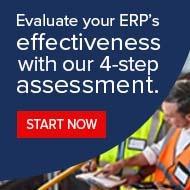How to Integrate New Functionalities with Older Legacy Applications
 Enterprises know they should be adopting the best that modern technology has to offer to stay competitive and on top of their game. But for many, the thought of having to upgrade their legacy systems in order to “stay modern” is something that feels overwhelming.
Enterprises know they should be adopting the best that modern technology has to offer to stay competitive and on top of their game. But for many, the thought of having to upgrade their legacy systems in order to “stay modern” is something that feels overwhelming.
For organizations who might be feeling this way, here’s an assuring reality: just because you’re running older legacy applications does not mean you’re unable to integrate newer mobile technologies that meet your enterprise’s modern needs.
The truth is, the IBM i platform supports older applications as well as the implementation of newer, more modern technologies. And its ability to do so opens the door for organizations who are thinking about integrating many of the mobile capabilities that are so important in today’s manufacturing workplace. In this blog, we’ll touch on what some of those “mobile” capabilities are, why they matter and how you should (and should not) approach their integration.
Embracing the ‘Old Plus New” Hybrid Approach
As mentioned above, integrating mobile functionality does not have to be an old vs new binary decision. Embracing a hybrid approach can bring modern mobile functionalities to your existing ERP without going through a major technology upheaval or spending an exorbitant amount.(Read Hybrid ERP: The Best of Both Worlds.)
So, with the hybrid approach in mind, it then makes sense to ask: What is my company looking to do with the newer technologies that are available? Which mobile functionalities will supplement my existing capabilities? These new technologies may include, for example:
- Sophisticated, graphical reporting on a mobile device, where data is presented in a graphical format that is easy to read and interpret. (A stark contrast to the text-based green screens that some of us are familiar with!)
- Mobile efficiencies on the floor: For staff members who may be running operations on the plant floor or in a distribution center, there’s an obvious need for the ability to access key data from a smaller, more convenient mobile devices vs being tied to a physical terminal.
- Remote empowerment for key staff: Field personnel, including your sales force, can be empowered with information that is accessible anywhere. They in turn can use that information to deliver better customer experiences. This also includes your sales forces who need access to data on a mobile device outside of the plant.
Additionally, apart from some of the functional capabilities, integrating these types of mobile functionalities can be an important factor in attracting top talent among the millennial workforce; a group that is generally resistant to older technologies.
What to Avoid with Your Hybrid Approach to Mobility
While “adding on” mobile applications can help you extend the life of your ERP, it is important to avoid the creation of a hodge-podge infrastructure with applications haphazardly tacked on top of one another.
Rather, the addition of mobile applications should be a well-planned and strategic process. Enterprises need to create a roadmap to ensure that they do not build one-off solutions that focus on how one singular application interacts with the ERP. The focus should be on the bigger picture, meaning applications are added in a way that allows you to build further upon your framework in the future. And that means IT leaders and with key stakeholders should carefully identify and deploy applications that are interoperable and will be compatible to future upgrades. (Read more expert insights on How to Avoid a Hodge-Podge ERP Environment.)
It is also important to put some thought into the integration of your back-end systems. A little forethought into simplifying that access to data will go a long way in simplifying your move toward having all the right apps at your fingertips.
How to Take the First Steps
So where, exactly, should you start with your plans to move into the mobile world? As stated, having a roadmap in place is critical before you start integrating new mobile applications. Here’s how your organization can approach this process:
- Identify the need
The first step is to identify aspects and operations at your business that can benefit from added mobility and easy access to information.
For example, mobile applications can help you deliver superior customer experiences. Let’s say you have a sales representative visiting a customer. A mobile application can tie together related information such as the following: when the order was placed, when it was shipped, tracking details, the status of any offers or discounts the customer might have redeemed, and so on. All of this is at the fingertips for your representative and they can instantly answer what your customer wants to know.
This ability to connect disparate data and complete tasks on the go brings speed to your operations, no matter which industry you are in. So identify your specific use case and work on integrating a mobile application that can plug in to fulfill it.
- Identify in-house skills
Once you know the solution you want, the next step is to identify the resources you have in-house to help implement it. Evaluate your current ERP capabilities and personnel expertise. IT departments may not have in-house resources or expertise available to develop and integrate certain aspects of the mobile applications. But those RPG skills that most IBM i shops have can be put to good use in writing web services to support your new mobile initiatives.
Also evaluate which software tools may be available to help you along. Adopting third-party software tools can be a good way to augment your resources and achieve a successful integration. These tools reduce the risk, and also force you to adopt certain standardized practices which work out well when it comes to creating interoperable solutions.
- Consider your outsourcing needs
For enterprises that are ready to hit the ground running with integrating newer mobile applications, a knowledgeable technical services provider like PSGi can supplement your in-house skills and serve as a great partner to help you accomplish your goals in the following ways:
- Provide consultation services to identify opportunities and use cases for adopting mobile applications
- Help prioritize which have the highest impact for your business in the shortest delivery time
- Work alongside your staff to select the best way for your organization to integrate mobile applications in an efficient, reliable, and low-cost manner
- Help select the framework and the best toolset for the process
- Assist in building the solution and then providing ongoing technology support as needed
In summary
The bottom line is this: having a legacy ERP or running older applications on your IBM i platform does not mean that you cannot take advantage of modern mobile applications. You can extend the life of your existing platform by integrating mobile applications that bring in new functionalities. All you need to do is identify the right use cases, find the right mix of skills, start building (and benefitting from) these solutions – and delight in the fact that your legacy system never looked so good.

